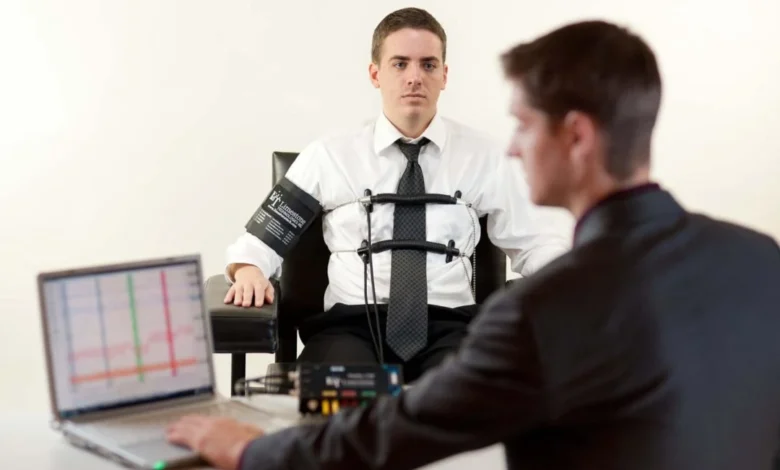How a Lie Detector Test Works in the UK

Lie detector tests, also known as polygraph tests, have been used for decades in various fields ranging from criminal investigations to personal disputes and employment screenings. These tests measure physiological responses, such as heart rate, blood pressure, and respiration, under the premise that deceptive behavior will cause noticeable changes in these biological markers. Despite their widespread use, many people remain unsure about how a lie detector test works and how reliable it truly is. This article will explain the process behind lie detector tests in the UK, their effectiveness, and the key factors that influence their accuracy.
What is a Lie Detector Test?
A lie detector test is designed to measure physiological responses that are believed to be linked to deception. The test uses a polygraph machine, which records data from sensors placed on the individual’s body. These sensors monitor four main physiological indicators: heart rate, blood pressure, respiration rate, and galvanic skin response (GSR). The assumption is that when a person is being deceptive, their body experiences stress or anxiety, leading to changes in these physiological parameters.
While the polygraph can’t directly measure a person’s truthfulness or lies, it is based on the idea that deception can cause noticeable physical reactions. By tracking these changes during the test, an examiner attempts to identify if a person is lying or telling the truth.
The Process of a Lie Detector Test in the UK
The process of taking a lie detector test in the UK generally follows a series of structured steps to ensure the accuracy and fairness of the results. While the specific procedure can vary depending on the examiner or the context of the test, there are several key stages that remain consistent across most tests.
1. Pre-Test Interview
The first stage in the lie detector test process is the pre-test interview. This part of the procedure is essential for establishing the baseline data needed to interpret the individual’s physiological responses accurately. During this interview, the examiner will ask the person to answer a few simple, non-threatening questions, such as “What is your name?” or “What is today’s date?” These baseline questions help the examiner establish the person’s normal physiological responses when they are not under stress or being deceptive.
Additionally, the examiner will explain the entire test process, outline the questions that will be asked during the test, and discuss any rules and expectations. This step ensures that the individual is fully informed about the test and reduces anxiety, which can influence the results.
2. Attachment of Sensors
Once the pre-test interview is complete, the examiner will attach sensors to the individual’s body to monitor their physiological responses. The sensors are typically placed on the chest, abdomen, and fingers, and they measure heart rate, blood pressure, respiration, and skin conductivity. These sensors are connected to the polygraph machine, which records the data throughout the test.
The individual is then asked to sit still and relax as much as possible. This ensures that the physiological responses recorded are as accurate as possible and are not influenced by extraneous movement or other factors.
3. The Questioning Process
During the actual polygraph test, the examiner will ask a series of questions designed to assess the person’s truthfulness. The questions typically follow a structure where simple baseline questions are followed by relevant questions related to the subject of the test. For example, in a criminal investigation, the examiner may ask questions like, “Did you commit the crime?” or “Were you at the crime scene at the time of the incident?”
The key aspect of the polygraph test is comparing the individual’s physiological responses to the baseline questions with those related to the issue under investigation. Significant physiological changes, such as an elevated heart rate or increased blood pressure, may suggest deception, especially if these changes occur in response to the relevant questions.
However, it is important to note that physiological responses can also be triggered by factors other than deception, such as anxiety, nervousness, or fear. This is why the examiner must carefully analyze the results and look for patterns in the data.
4. Post-Test Interview and Analysis
After the test is complete, the examiner will conduct a post-test interview. During this phase, the examiner may ask the individual to review the questions asked during the test and clarify any discrepancies or confusing responses. This is an opportunity for the person being tested to explain any physiological reactions that may have occurred during the test, such as anxiety or discomfort.
The data recorded by the polygraph machine is then analyzed to determine if there were significant physiological responses that may indicate deception. The examiner will compare the individual’s physiological reactions to the baseline readings taken earlier and assess whether the changes are consistent with truthfulness or deception.
The examiner’s interpretation of the data is crucial. While the polygraph machine records the raw data, it is the examiner’s experience and expertise that help determine whether the physiological changes are significant enough to suggest dishonesty. However, because of the complexity of interpreting the results, human error or bias can sometimes influence the outcome.
5. Reporting the Results
Once the analysis is complete, the examiner will prepare a report based on the findings. This report will include an interpretation of the physiological responses recorded during the test, along with an assessment of whether the individual was truthful or deceptive. The results of the polygraph test may be shared with the relevant parties, but they are not always legally binding.
In the UK, lie detector test results are generally not admissible as evidence in criminal trials. However, they may be used in certain situations, such as probation monitoring, personal investigations (like infidelity), or employment screenings, where they provide additional information or help guide further actions.
Factors That Affect the Accuracy of Lie Detector Tests
While polygraph tests are widely used, they are not without their limitations. Several factors can affect the accuracy and reliability of lie detector test uk, which makes it important to approach the results with caution.
1. Nervousness and Anxiety
One of the most significant challenges when using polygraphs is that nervousness, anxiety, or fear can also cause changes in physiological responses. A person who is anxious about the test or uncomfortable with the process may exhibit signs of stress, such as increased heart rate or elevated blood pressure, even if they are telling the truth. This can lead to false positives, where the person is mistakenly identified as being deceptive.
2. Physical or Psychological Conditions
Certain medical or psychological conditions can also affect a person’s physiological responses during a polygraph test. Conditions such as hypertension (high blood pressure), panic attacks, or anxiety disorders can lead to physiological responses that may mimic those of someone who is lying. Similarly, the use of medications or stimulants can interfere with the test results, making it harder to accurately determine if someone is being truthful.
3. The Examiner’s Skill and Experience
The accuracy of a lie detector test also depends on the skill and experience of the examiner. A well-trained examiner will know how to interpret the physiological data and be aware of potential factors that could affect the results. However, human error or bias can sometimes influence the interpretation of the data, leading to inaccurate conclusions.
4. The Use of Countermeasures
Some individuals may attempt to manipulate the test results by using countermeasures. These can include physical tactics, such as controlling their breathing, or psychological techniques, like attempting to deceive the examiner without showing noticeable signs of stress. While polygraph examiners are trained to detect such countermeasures, they are not always successful in identifying them.
Legal and Ethical Issues Surrounding Lie Detector Tests in the UK
In the UK, polygraph test results are generally not admissible as evidence in criminal trials. This is largely due to concerns over the accuracy and reliability of polygraph tests. While they may be used in certain situations, such as probation monitoring or employment screening, the results are not considered definitive proof of truth or deception.
There are also ethical concerns regarding the use of lie detector tests. Some people may feel coerced into taking the test, particularly in situations where their job or legal standing is at stake. Additionally, the potential for false positives and the lack of conclusive evidence raises questions about the fairness of using polygraphs as a tool to make important decisions.
Conclusion
Lie detector tests, or polygraphs, have been used in the UK for many years, but their accuracy and effectiveness remain debated. The process of a polygraph test involves measuring physiological responses to questions, with the assumption that deception will trigger changes in heart rate, blood pressure, and other indicators. While polygraph tests can provide valuable insights, they are not foolproof and can be influenced by factors such as anxiety, medical conditions, or examiner bias.
Ultimately, while lie detector tests can serve as a useful tool in certain situations, they should not be considered an infallible measure of truthfulness. Due to their limitations, polygraph results should be considered alongside other evidence and information when making important decisions.





